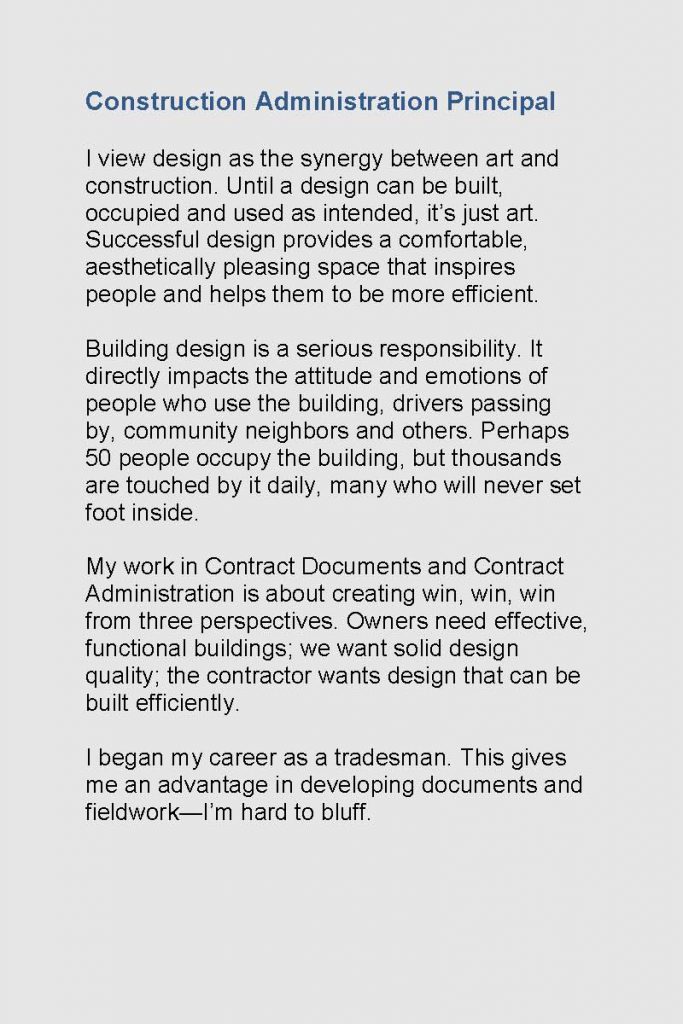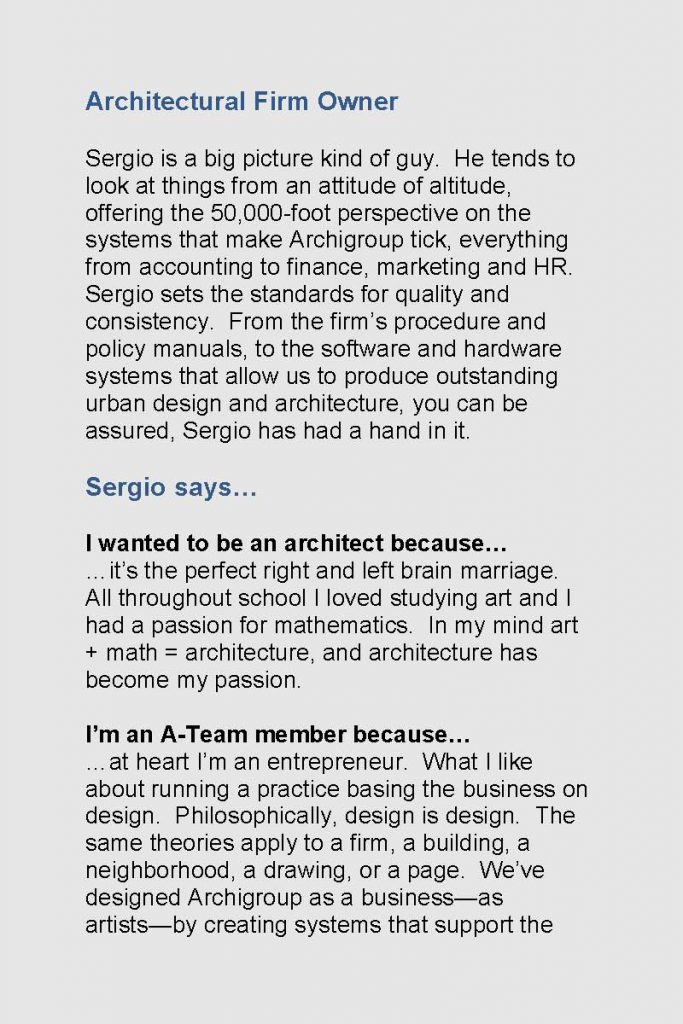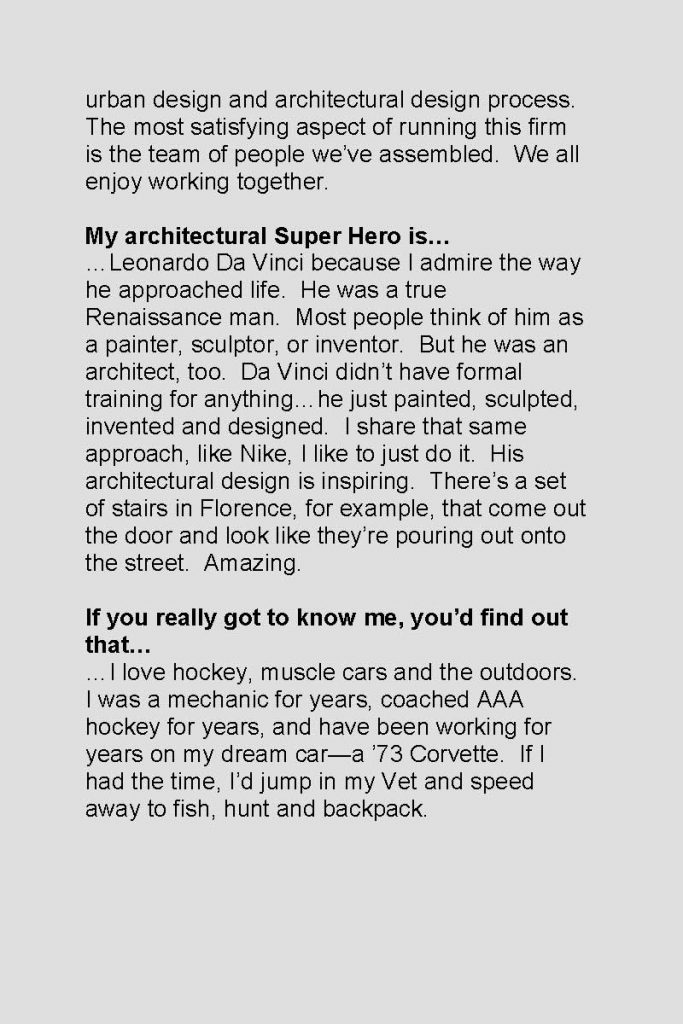It’s not uncommon to come across language in our industry that claims, “Our people are our greatest asset.”
It’s true. People are the machines that drive design.
Yet we do little to make our team of professionals truly stand out. Following are three ways to improve how we tell the stories of the people in our firms.
Write Great Profiles To Showcase Your Professionals
Take a moment to think about how you’re telling the stories of the people who make up your firm. Can someone who doesn’t know the people who make up your firm get a sense of them? Who they are? What drives them? What perspective do they offer to the design process?
Here are a few real examples of typical industry profile writing (the names have been changed to protect the innocent)
Mr. McCracken’s professional experience includes project design and construction administration. He has extensive experience in complex scheduling software, which he developed as a project manager for a variety of projects both small and large.
Ms. Cordalia is a certified LEED Professional and her experience represents a diverse background as a Project Manager and Project Architect. She has guided renovation and new construction projects for retail centers, civic complexes, office buildings, health and educational facilities and community recreation centers. She gives her complete attention to form, function and detail, working with the client and the architectural/engineering team to ensure a successful project.
Seriously, these are real examples. Is this really the best we can do in such a creative field?
It’s important to acknowledge that there are differences between how we tell the story of an individual in an SOQ or Proposal vs. on the web. In Statement of Qualifications and Proposals, the more traditional resume is needed, but there is room for personalizing the descriptions to give readers a better sense about what it would be like to work with the person. The web offers a greater degree of flexibility and the opportunity to reveal a creative, more personable introduction to members of your firm.
Let’s begin with the website.
First and foremost, if you’re not featuring your key personnel on your website (In my head I just said, “What’s wrong with you…”), you’re remiss in representing your firm. I’ve heard the excuse that, “We don’t want headhunters taking our staff.” That’s really non-issue today because of social media. Finding people through Linked In, Facebook and other channels is easy. Protecting your employees from poaching has a lot more to do with how you’re handling the work load and environment, and career opportunities and professional development than featuring them on your website.
On websites where professionals are listed, the majority I see present information that reads like a resume or CV. Whether on your website or in written form, a professional profile should give a sense of who the person is. It should tell a story. It should be brief, but interesting. Let me share two different approaches.
One firm I worked with wanted to position as a design firm. I interviewed each principal and senior staff person about design. Every person from the owner to the CFO and marketing director, in addition to the architects, shared how their work had an impact on design. Here are a couple examples.


These profiles offer a good sense of what each person’s involvement is in supporting design. It shows that design is valued throughout the firm, not just by the architects. It says, without saying it literally, “Every person in our firm is committed to design regardless of the individual’s position.”
Another firm I work with is a really fun group of people. We wanted their image to convey that, so on their Professionals page we had each person answer a series of questions like, “Who’s your favorite architect? What’s your favorite piece of architecture. If you could talk with any famous architect dead or alive, who would it be?” The answers were fun and interesting. The photographs are casual and people are genuinely smiling, not pasty-fake smiling. It’s a fun site to visit, which is an accurate reflection of the firm’s culture and personality.


Leave a Reply